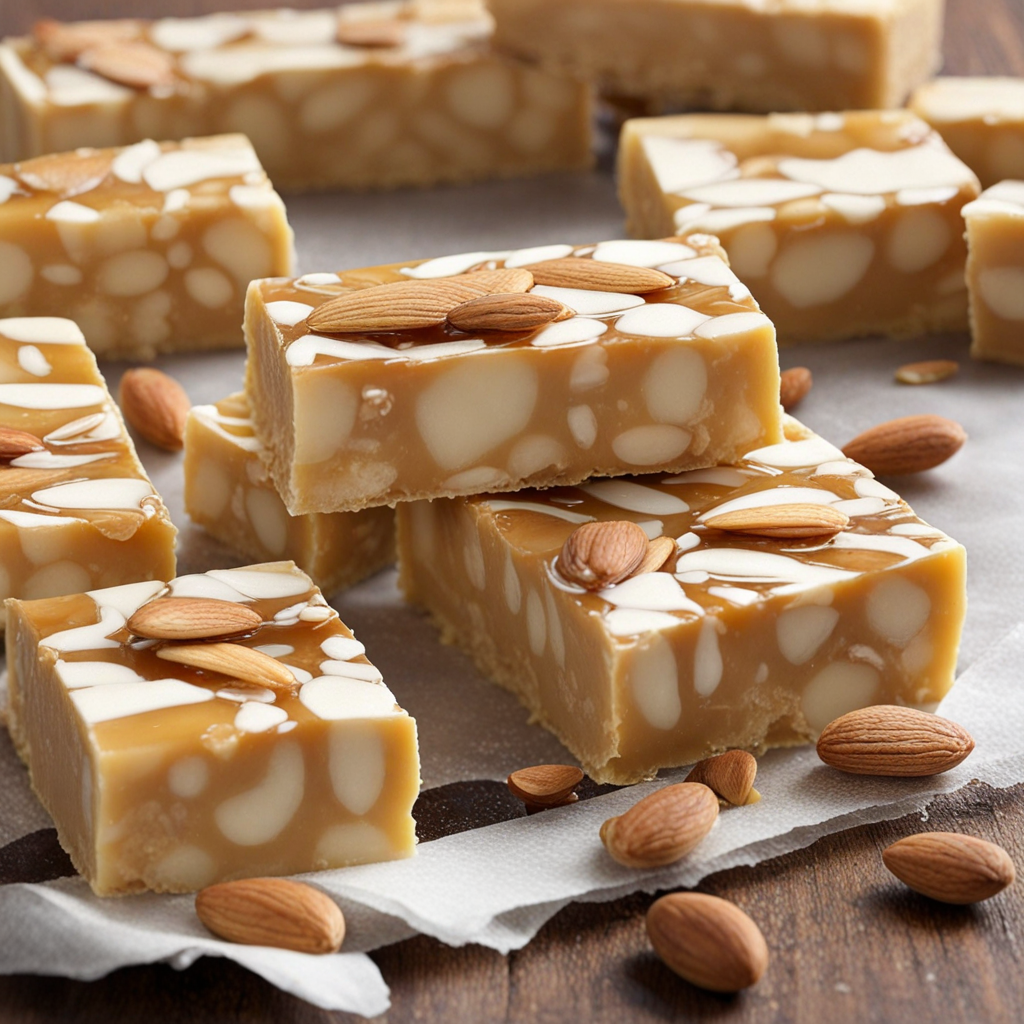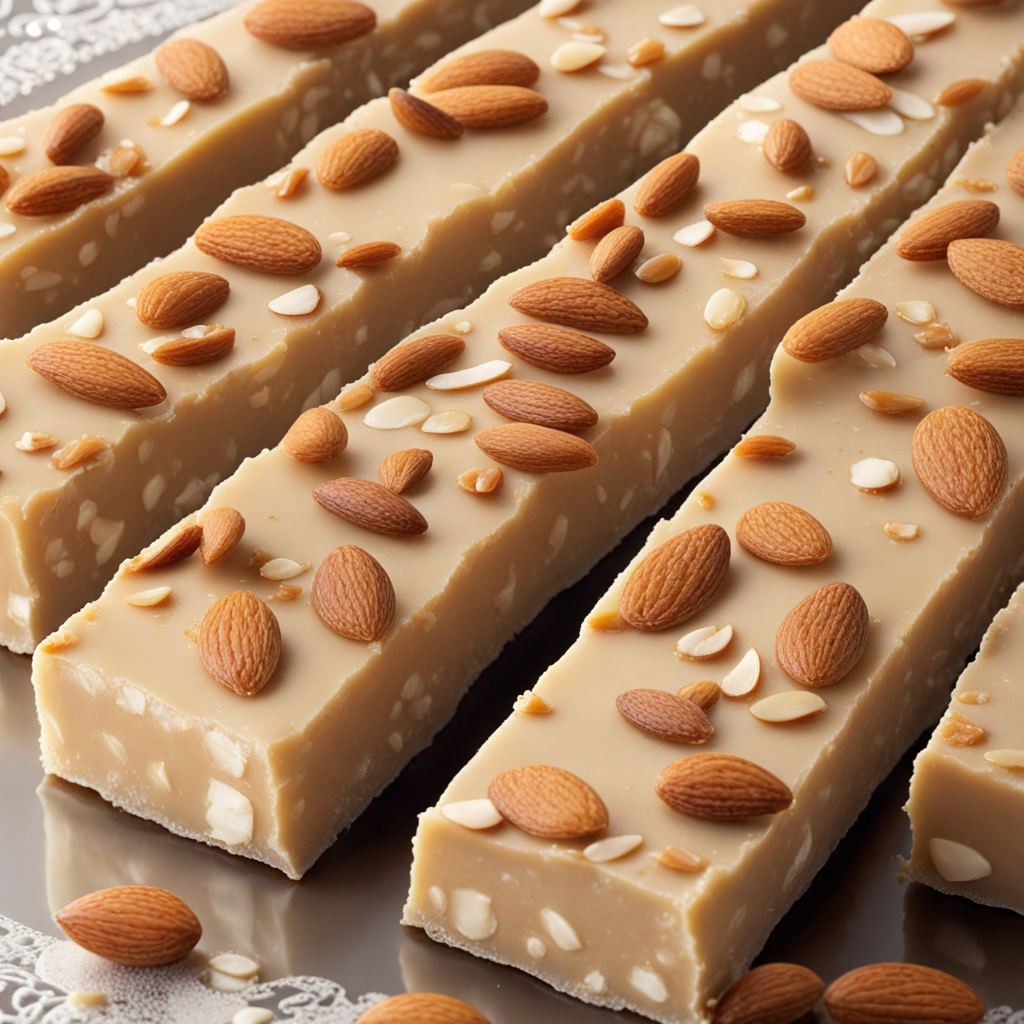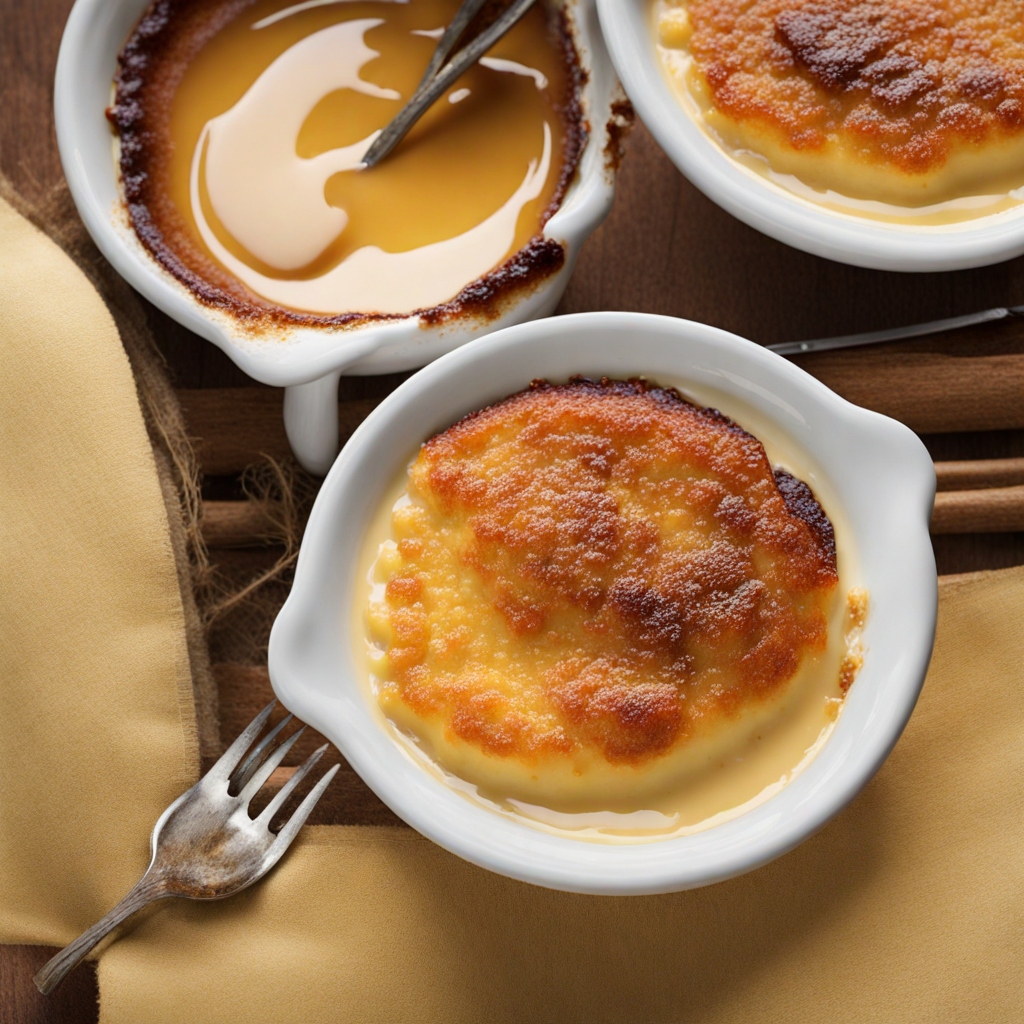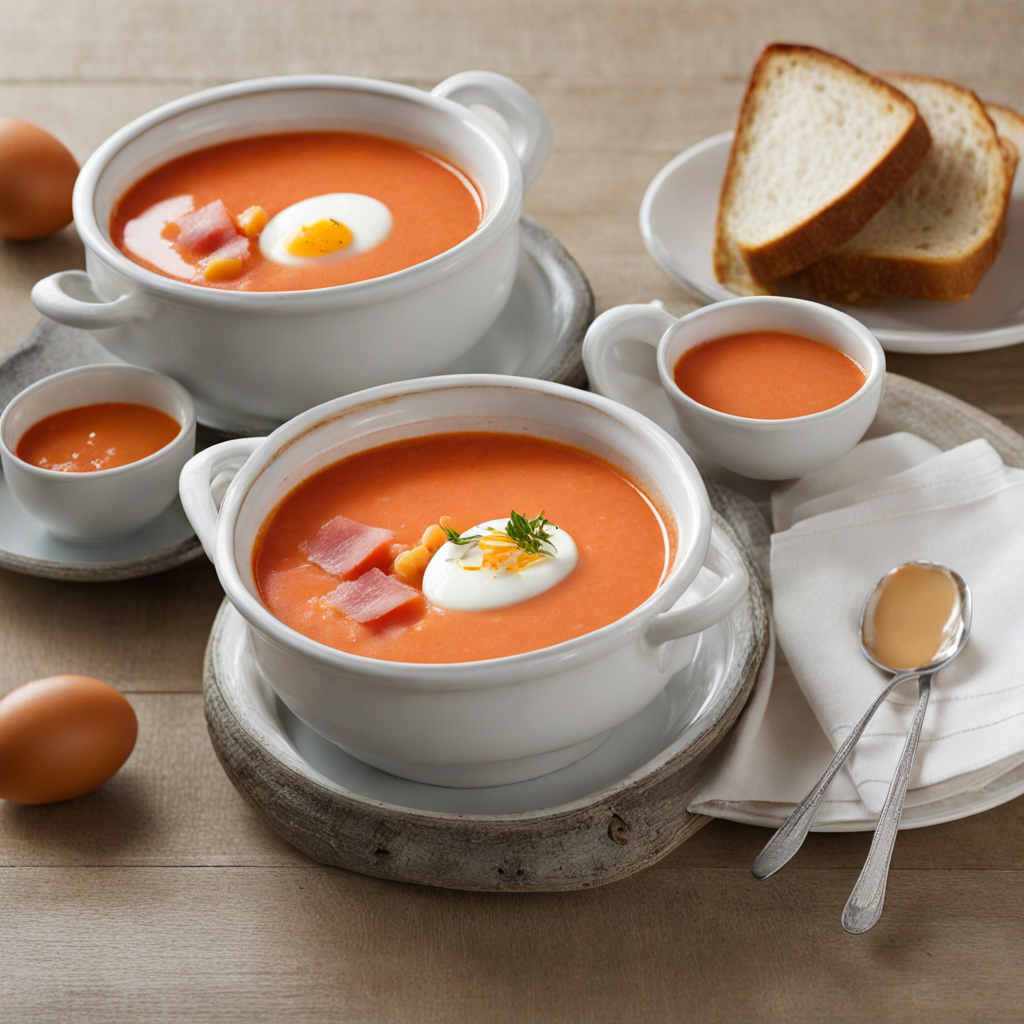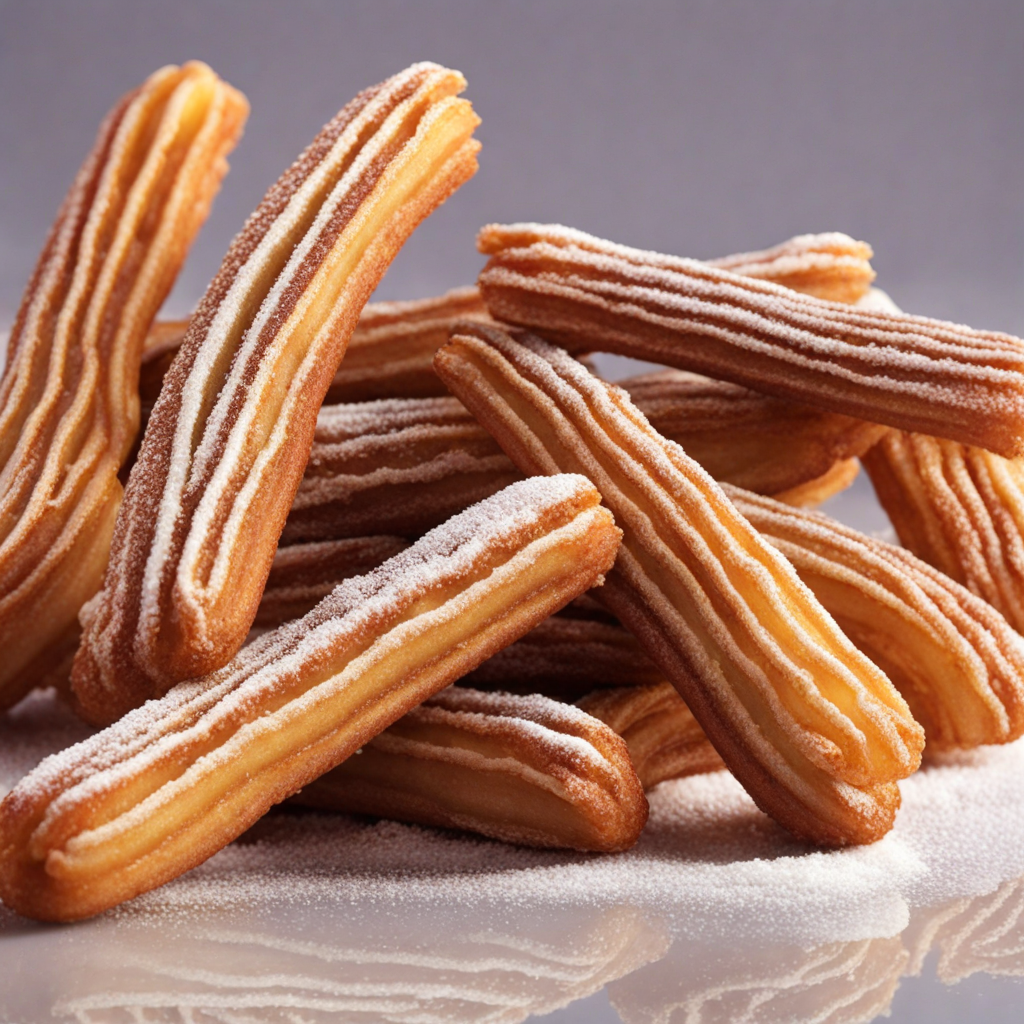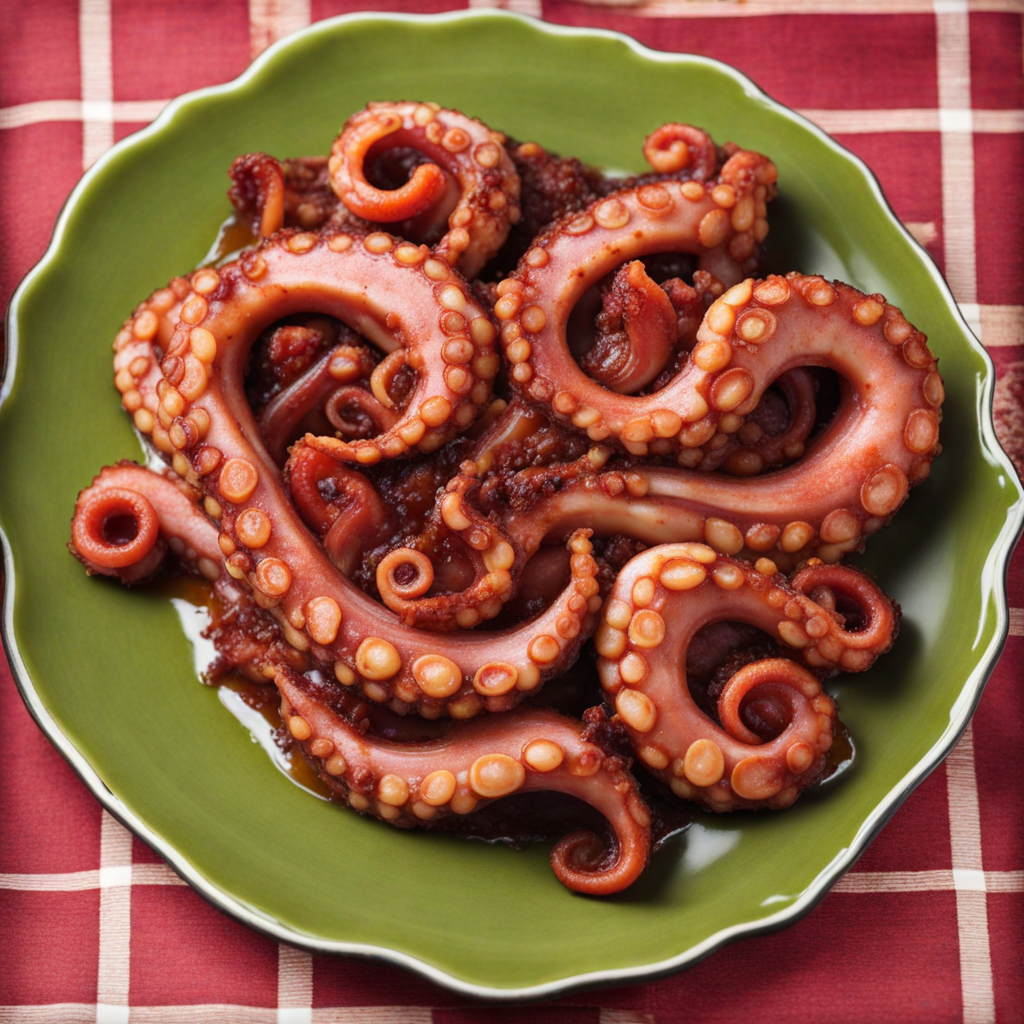Turrón
Turrón is a traditional Spanish confection that boasts a delightful combination of textures and flavors, making it a must-try for any food enthusiast. Primarily made from almonds, honey, sugar, and egg white, this sweet treat comes in two main varieties: Turrón de Alicante, which is hard and crunchy, and Turrón de Jijona, known for its soft and chewy consistency. The base of toasted almonds gives it a rich, nutty flavor, while the honey adds a natural sweetness that enhances the overall taste profile. The careful balance of ingredients results in a complex flavor that is both satisfying and indulgent. Beyond the classic versions, Turrón has evolved over the years, leading to a variety of innovative flavors and textures. Some artisans experiment by incorporating other nuts, dried fruits, and even chocolate, creating unique combinations that cater to diverse palates. The seasonal nature of Turrón, often associated with Christmas in Spain, adds to its charm, as families and friends gather to share this beloved treat during festive celebrations. Each bite is a delightful experience, transporting you to the sunny landscapes of Spain where the tradition is deeply rooted. For those seeking a new taste adventure, Turrón offers a perfect blend of tradition and creativity. It can be enjoyed on its own, paired with a cup of coffee or tea, or used as an ingredient in desserts and pastries. Whether you choose the classic hard Turrón de Alicante or the creamy Turrón de Jijona, each piece is a testament to Spanish culinary heritage, promising an unforgettable taste experience that celebrates the essence of almond and honey in every bite.
How It Became This Dish
The History of Turrón: A Sweet Symbol of Spanish Heritage Turrón, a sweet, nougat-like confection, has been an integral part of Spanish culture for centuries. Its rich history is woven into the fabric of Spanish culinary traditions, particularly during festive occasions such as Christmas. This delectable treat showcases the influences of various cultures and regions, making it a unique gastronomic symbol of Spain. #### Origins: A Fusion of Cultures The origins of turrón can be traced back to the ancient civilizations of the Mediterranean. The earliest antecedents of this confection are believed to have emerged in the Middle Ages, particularly in the region of Al-Andalus, which was under Moorish rule from the 8th to the 15th centuries. The Moors brought with them sugar and almonds – two key ingredients in many of their dishes. The combination of these ingredients likely led to the creation of a simple almond and honey confection. The word "turrón" itself is derived from the Latin term "torrare," which means to toast or roast, referring to the process of toasting nuts. Historical records suggest that the first documented reference to turrón dates back to the 15th century, with mentions in texts from the city of Jijona (Xixona) in the province of Alicante. It was here that the craft of making turrón flourished, establishing Jijona as a pivotal center for its production. #### Cultural Significance: A Festive Tradition Turrón is deeply intertwined with Spanish celebrations, particularly during the Christmas season. In Spain, it is customary to gift and share turrón with family and friends, symbolizing goodwill and festive spirit. The treat is often served at holiday gatherings, alongside other traditional sweets such as polvorones and mantecados. In many Spanish households, the making of turrón becomes a cherished family activity, passed down through generations. The variety of turrón is reflective of Spain’s diverse culinary landscape, with each region contributing its unique twist on the confection. The two most famous types of turrón are Turrón de Jijona (soft) and Turrón de Alicante (hard). Turrón de Jijona is made with ground almonds, honey, and egg whites, resulting in a smooth, chewy texture. In contrast, Turrón de Alicante is made with whole almonds, providing a crunchy bite. Both varieties are protected by Denominación de Origen (DO) status, ensuring their quality and authenticity. #### Development Over Time: Evolution and Variations As Spain entered the modern era, the production of turrón evolved significantly. The 19th and 20th centuries saw advancements in production techniques and the rise of commercial turrón manufacturers. The industrial revolution allowed for mass production, making turrón more accessible to the wider public. However, this shift also led to concerns about the authenticity and quality of the product, prompting a resurgence of interest in artisanal methods. In recent decades, the culinary landscape in Spain has become increasingly innovative, with chefs experimenting with traditional recipes and introducing new flavors and ingredients. Modern variations of turrón now include flavors such as chocolate, coffee, and even fruits, catering to a broader audience and enticing younger generations to embrace this traditional treat. While the classic recipes remain beloved, the adaptability of turrón has allowed it to retain relevance in contemporary Spanish cuisine. It is not uncommon to find turrón served in gourmet restaurants, often paired with wine or incorporated into desserts, showcasing its versatility as a culinary ingredient. #### Turrón Beyond Spain: Global Influence As Spanish-speaking communities spread across the globe, so too did turrón. In Latin America, variations of turrón can be found, reflecting local ingredients and tastes. For example, in Mexico, a similar confection known as "turrón de cacahuate" is made with peanuts, while in the Philippines, a version called "turrón de banana" incorporates bananas wrapped in a thin layer of caramelized sugar. These adaptations highlight the universal appeal of nougat as a sweet treat, transcending cultural boundaries. #### Conclusion: A Timeless Treat Today, turrón stands as a testament to Spain’s rich culinary heritage, embodying the blending of cultures that has shaped the nation’s gastronomic identity. Its significance extends beyond mere sustenance; it is a symbol of celebration, family, and tradition. As Spain continues to navigate the complexities of modernity, the enduring charm of turrón remains intact, inviting both locals and tourists alike to indulge in its sweet embrace. In recent years, efforts have been made to promote turrón as a protected product, ensuring that its traditional methods and ingredients remain preserved. Events such as the Turrón Festival in Jijona celebrate this cherished confection, drawing attention to its historical and cultural importance while fostering a sense of community around this beloved sweet. As we savor each bite of turrón, we are not just enjoying a delicious treat; we are partaking in a long-standing tradition that connects us to the past, celebrates the present, and promises a future filled with sweetness. Whether enjoyed during the festive season or as an everyday indulgence, turrón continues to be a beloved emblem of Spanish culture, cherished by generations and destined to delight many more.
You may like
Discover local flavors from Spain


